Madhuri Dixit

Subscribe to read full article
This section is for paid subscribers only. Our subscription is only $37/- for one full year.
You get unlimited access to all paid section and features on the website with this subscription.
Not ready for a full subscription?
You can access this article for $2 , and have it saved to your account for one year.
- Born: 15 May, 1967 (Mumbai)
- Primary Cinema: Hindi
- Parents: Shankar Dixit, Snehlata Dixit
- Spouse: Shriram Nene
- Children: Arin, Ryan
In one of her latest releases, Kalank (2019), a box office damp squib at that, she had film critics gushing, “In the blinding glow of Dixit's presence as a nautch girl who can turn on the magic at will, the younger cast members pale somewhat in comparison. She lights up the screen as only she can, pushing the others to strive harder.” The magic of Madhuri Dixit has not waned since the time she became an overnight star, setting the screen ablaze as Mohini with her iconic song Ek do teen, in Tezaab (1988) also bagging her first Filmfare nomination. Hailed for her naturalness and grace on screen, her luminous beauty and emotive power, she is among the most acclaimed and accomplished actresses of the Hindi film industry. One of the industry’s highest paid actresses in the 90s and early 2000s, a numero uno, she has appeared in over 70 Hindi films. Among her significant films are Ram Lakhan (1989), Tridev (1989), Parinda (1989), Prem Pratigyaa (1989), Thanedaar (1990), Kishen Kanhaiya (1990), Dil (1990), Saajan (1991), Beta (1992), Khalnayak (1993), Hum Aapke Hain Koun..! (1994), Anjaam (1994), Raja (1995), Dil To Pagal Hai (1997), Mrityudand (1997), Pukar (2000), Lajja (2001), Devdas (2002), and Dedh Ishqiya (2014). Winner of six Filmfare Awards, featured seven times on the Forbes India's Celebrity 100 list, she was also honoured with the Government of India’s Padma Shri award in 2008.
Actress, producer, television personality and music artist, she was born on 15 May, 1967 in Bombay to Shankar and Snehlata Dixit. With an interest in dance that was apparent from the age of three, she trained in Kathak for eight years, even receiving a scholarship as a Kathak dancer when she was nine. Schooled at Divine Child High School in Andheri, she had an avid interest in dramatics. It was this passion that led her to drop out of her science studies at Sathaye College, to chase her film dream. Making her debut in Rajshri Productions' flop Abodh (1984), opposite Bengali actor, Tapas Pal, she nonetheless garnered positive reviews for her performance as the innocent wife. Awara Baap (1985) which followed also sank at the box office. Her next four releases — Swati (1986), Manav Hatya (1986), Hifazat (1987) and Uttar Dakshin (1987) all left no impact, as did Hifazat (1987) opposite Anil Kapoor, Mohre (1988), and Khatron Ke Khiladi (1988). Dayavan (1988) opposite Vinod Khanna was a commercial success, but the prime focus was on Khanna's performance.
The tipping point came with N Chandra’s Tezaab (1988), which went on to become the highest grossing film of the year and also bagged Dixit her first Filmfare Best Actress award nomination for her role as the impoverished Mohini who is forced to dance to make money for her father. If she won applause for her resounding dance act, her acting won praise too; the film established her overnight as a leading actress of Hindi cinema. Another thumping hit followed in Subhash Ghai's Ram Lakhan (1989), again opposite Anil Kapoor, while her performance in Prem Pratigyaa (1989) opposite Mithun Chakraborty won her a second nomination for Filmfare Best Actress Award. Part of the ensemble cast of the action thriller Tridev (1989), she was part of one of the biggest hits and the third highest-grossing film of the year. Vidhu Vinod Chopra's drama Parinda (1989) followed, a stunning critical success which was selected as the official Indian submission for the 1990 Academy Award for Best Foreign Language Film. Her ‘touching vulnerability and soft-focus appeal’ in the gangster drama came in for special mention. She went on to be part of Ilaaka (1989) and Mujrim (1989) both opposite Mithun Chakrobarty, Paap Ka Ant (1989) opposite Govinda, and Kanoon Apna Apna (1989) opposite Sanjay Dutt, an average grosser.
A spate of flops followed in 1990—namely Maha-Sangram, Deewana Mujh Sa Nahin, Jeevan Ek Sanghursh, Sailaab and Jamai Raja. The spell was broken by Rakesh Roshan's action comedy Kishen Kanhaiya (1990) alongside Anil Kapoor, which became the fourth-highest-grossing film of the year. Madhuri received praise for her role as a strong-willed woman in Izzatdaar (1990); but it was her role as the rich, spoilt girl Madhu who falls in love with a poor boy in Dil (1990) that won her, her first Filmfare Best Actress Award. Dil, starring Aamir Khan, saw Madhuri hailed for her range as a performer, whether as the rebellious lover or the estranged wife. She ended the year on a high with another hit in the action drama Thanedaar (1989), opposite Sanjay Dutt. Among her five releases in 1991, which included Pyar Ka Devta, 100 Days, Pratikar, and Prahaar, it was Saajan opposite Sanjay Dutt and Salman Khan which became a huge critical and commercial success. She also bagged her fourth Filmfare Best Actress nomination for her portrayal of Pooja Saxena, who is in love with her idol - Sagar.
The following year brought Dixit her second Filmfare Best Actress award for her performance in the biggest hit of the year—Beta (1992). Her powerhouse performance as an educated woman who rises against the manipulation of her mother-in-law, was much-appreciated, as was her hit song, Dhak dhak karne laga. The year brought other releases such as Zindagi Ek Jua, Prem Deewane, Khel and Sangeet, while her next, Sudhir Mishra's Dharavi (1992) alongside Shabana Azmi, Om Puri and Anil Kapoor, won the National Film Award for Best Feature Film in Hindi. Commercial success came with Ramesh Talwar's Sahibaan (1993), topped by critical acclaim in Subhash Ghai's crime drama Khalnayak, in which she played an undercover police officer out to trap an escaped criminal. She bagged her sixth nomination for the Filmfare Best Actress Award, in the second highest-grossing film of the year. While 1993 brought Singeetam Srinivasa Rao's Phool and Lawrence D'Souza's Dil Tera Aashiq, she won her seventh Filmfare Best Actress award nomination the following year for Rahul Rawail's Anjaam (1994), a psychological thriller starring Shah Rukh Khan. Thumping success followed in Rajshri Productions' family drama Hum Aapke Hain Koun..! (1994) opposite Salman Khan, which became one of the biggest hits in the history of Hindi cinema, breaking the records set by Sholay (1975), and garnering Rs.1.35 billion worldwide. Her portrayal of Nisha, who chooses duty over love, won her a third Filmfare Best Actress Award and her first Screen Award for Best Actress. Her popularity powered Indra Kumar’s Raja (1995) co-starring Sanjay Kapoor, to success, as she went on to win a Filmfare Best Actress nomination for the film, as well as for David Dhawan’s Yaraana (1995) opposite Rishi Kapoor. While Prem Granth (1996) and Rajkumar (1996) failed at the box office, critical acclaim came her way for her strong role in Prakash Jha's Mrityudand (1997) alongside Shabana Azmi and Shilpa Shirodkar. Madhuri won her third Screen Award for Best Actress for the film, also making an impact in Koyla (1997). She won her fourth Filmfare Best Actress Award as well as the Zee Cine Award for Best Actor – Female, for Yash Chopra's musical romantic drama Dil To Pagal Hai (1997), co-starring Shah Rukh Khan and Karishma Kapoor, which was the second highest-grossing film of the year in India, also winning the National Awards for Best Popular Film Providing Wholesome Entertainment. While films like N. Chandra’s Wajood (1998) and Aarzoo (1999) failed to make an impact, she bagged Best Actress nominations for Rajkumar Santoshi's Pukar (2000), set against a backdrop of the Indian Army, which won two National Film Awards, including the Nargis Dutt Award for Best Feature Film on National Integration. She also featured in the titular role in renowned painter M F Husain’s Gaja Gamini (2000), appearing in various incarnations such as Mona Lisa, Shakuntala and others. Singled out for praise even in rank bad films such as Deepak Shivdasani's Yeh Raaste Hain Pyaar Ke (2001), she made her mark again with Rajkumar Santoshi’s social drama Lajja (2001), dealing with the issue of gender inequality. Her performance won her the Zee Cine Award for Best Actor in a Supporting Role – Female. Mega success came again with Sanjay Leela Bhansali's period romance Devdas (2002), co-starring Shah Rukh Khan and Aishwarya Rai, in which she portrayed Chandramukhi, the courtesan in love with the title character. She won the Filmfare Best Supporting Actress Award and the Screen Award for Best Supporting Actress for her understated performance, marked by passion, fire and gentleness. Besides being a mega commercial success, the film was screened at the 2002 Cannes Film Festival, and was also featured by Time in their listing of the "10 best films of the millennium". Chosen as India's official entry for the Academy Award for Best Foreign Language Film, it received a nomination at BAFTA, and five National Awards.
After a sabbatical, she returned to the screen with Anil Mehta's dance film Aaja Nachle (2007), winning positive reviews for her portrayal of Dia, a choreographer who returns to her town to save the endangered theatre where she learnt to dance. Relocating to India in 2011, she went on to star in the black comedy Dedh Ishqiya (2014), playing a con-woman Begum Para opposite Naseeruddin Shah, Arshad Warsi and Huma Qureshi. She was still found to be ‘compelling’ by film critics, despite her long hiatus. Soumik Sen's Gulaab Gang (2014), alongside Juhi Chawla, saw Madhuri play Rajjo, the leader of a women's activist group. She went on to make her Marathi cinema debut with the comedy-drama Bucket List (2018), winning fond reviews for her performance as Madhura Sane, a middle aged housewife who attempts to complete the bucket list of her deceased teenage heart donor. She featured in the Indra Kumar adventure comedy Total Dhamaal (2019), winning praise for her still-sparkling chemistry with Anil Kapoor, in the film which emerged as a major commercial success at the box office. She went on to be part of the ensemble cast of Abhishek Varman's period drama Kalank (2019), featuring Sanjay Dutt, Sonakshi Sinha, Alia Bhatt, Varun Dhawan and Aditya Roy Kapur, set in pre-Partition times, in which she played Bahaar Begum, the madam of a brothel. She bagged a third nomination for the Filmfare Award for Best Supporting Actress for her performance. Madhuri Dixit also produced the Marathi Netflix-drama 15 August (2019) under her production company RnM Moving Pictures, which was founded in 2018.
Performing in several stage shows, she also launched her own online dance academy Dance With Madhuri in 2013. She has also been part of several social service campaigns promoting children's education and the safety of women. Working with UNICEF to advocate the rights of children and prevent child labour and child trafficking, some of her social and philanthropic efforts have been geared towards AIDS prevention, welfare of victims of 2001 Gujarat earthquake, the NDTV Toyota Greenathon—India's first-ever nationwide campaign for saving the environment and creating awareness about environmental issues, and Emeralds for Elephants–a charity project for the conservation of Asian elephants and other endangered species, as well as Uttarakhand flood relief.
Making her television debut in 1985 with the serial Paying Guest, she has also hosted Sony Entertainment's matrimonial show Kahi Na Kahi Koi Hai, featured as a talent judge for seven seasons of the dance reality show Jhalak Dikhhla Jaa, hosted the cooking game show Food Food Maha Challenge, judged So You Think You Can Dance, and co-judged Colors TV's Dance Deewane.
Married to Shriram Madhav Nene, a cardiovascular surgeon from Los Angeles, California on 17 October, 1999, the couple have two children—Arin and Ryan.
-
Filmography (35)
SortRole
-

Aarzoo 1999
-
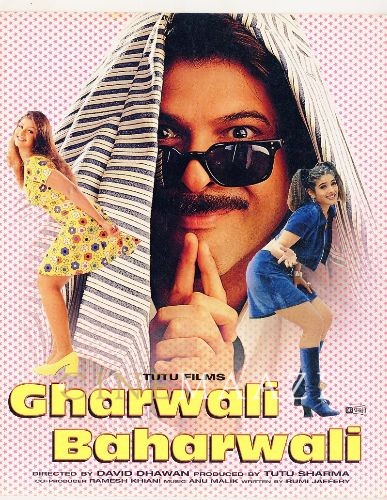
Gharwali Baharwali 1998
-

Dil To Pagal Hai 1997
-

Koyla 1997
-

Mahaanta 1997
-

Mohabbat 1997
-

Paappi Devataa 1995
-
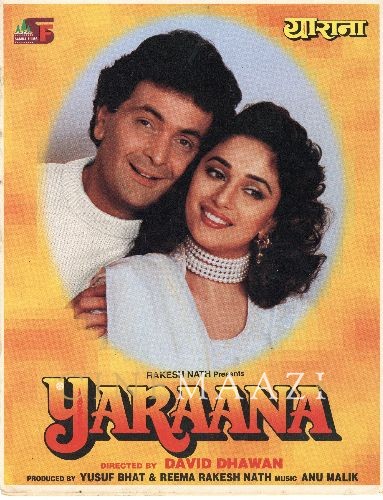
Yaraana 1995
-

Anjaam 1994
-

Dil Tera Aashiq 1993
-



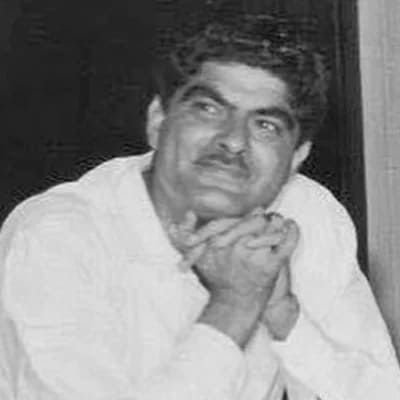
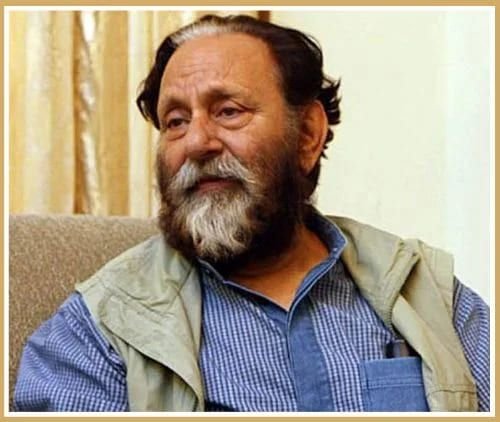
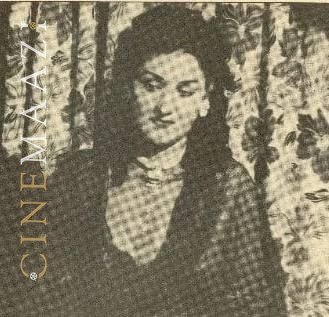
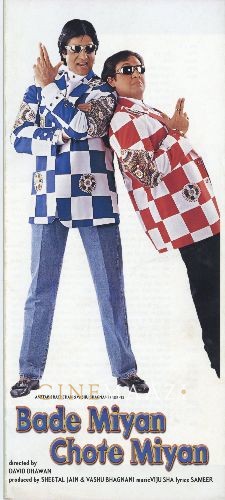
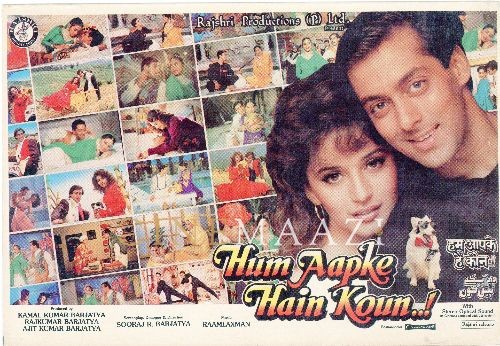


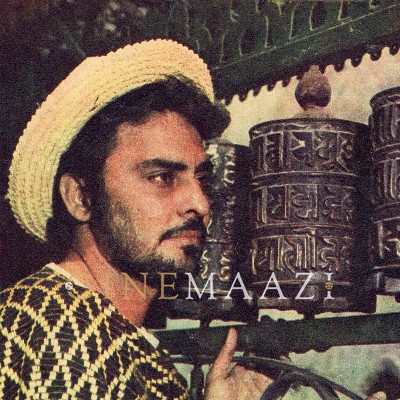
.jpg)



